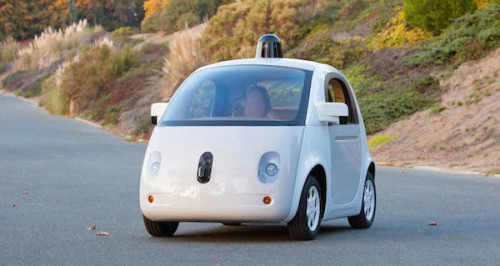A major hint appeared after the 2016 Trump election when Breitbart posted a leaked video from Google headquarters [...]]]>
A major hint appeared after the 2016 Trump election when Breitbart posted a leaked video from Google headquarters showing the leadership’s “dismayed reaction” to the electoral outcome. Multi-billionaire co-founder Sergey Brin compared Trump voters to fascists and said the election “conflicts with many of Google’s values.”
Later we heard more about how Google manipulates search results to favor left-wing results. In fact, Dr. Robert Epstein (a Democrat voter himself) warned that Big Tech can move millions of voters to the left in 2020. During a June discussion with Tucker Carlson, Dr. Epstein remarked, “. . . they can shift upwards of 15 million votes with no one knowing that they’ve been manipulated and without leaving a paper trail for authorities to trace.”

So the leftward opinions of Big Tech can have real world effects.
Tucker Carlson continued his investigation of Big Tech in a Friday discussion with a former employee of Google, probably as a result of a recent Wall Street Journal article, reprinted on MSN.com here: Republican Engineer Fired by Google Claims ‘Bullying’.
]]>TUCKER CARLSON: It’s pretty clear that Google isn’t simply just a business enterprise, though it is the most powerful business in the history of the world. It’s also an ideological organization to its core, who cares what you’re able to see and what you’re able to think and they exercise the same kind of control over their own employees.
Kevin Cernekee would know that firsthand. He spent three years at Google working as an engineer. He says he faced relentless bullying and intimidation from Google for his political views which are not liberal; one manager added him to an internal blacklist until finally, Google fired him last year. Kevin Cernekee joins us tonight.
Kevin, thanks very much for coming on. So, you believe that Google knew what your politics were, that you’re a conservative, harassed you for those views, and then ultimately dismissed you on the basis of them?
KEVIN CERNEKEE: Yes, that’s true. So basically, what happened is, when I joined Google, I saw a lot of employees being mistreated and abused and harassed for sharing conservative views or just for questioning company policies.
And I raised these issues through all the appropriate channels, I raised it through HR, I went to VPs, eventually wound up filing a charge with the Labor Board. And Google knew about this. This opened a Federal investigation from the Labor Board. I was working very closely with an investigator over there.
What happened was Google decided they did not like this investigator, and they made a lot of false accusations against me and they fired me. They said in writing that the reason they fired me was for participating in this labor investigation, and they’re basically daring the government to do anything about it.
CARLSON: I don’t think it’s legal, is it? I mean, you can’t fire someone for initiating a labor action, can you?
CERNEKEE: I wouldn’t think so. I have appealed the decision, and the Labor Board came back and basically said, “Denied.” They did not cite any case law. They didn’t really have a reason for it. It’s basically their will against anybody else’s.
CARLSON: Right. The most powerful country — company . . . country, yes, Freudian slip — in the world. How ideological is the management at Google?
CERNEKEE: It’s highly ideological. You can see bias at every level of the organization. One thing that I’ve noticed is that just handling of routine issues is plagued with bias, like they will get a report, an e-mail from a liberal reporter complaining about something and they will jump on it and they will fix the issue very, very quickly.
And contrast, one thing that I saw when I worked there was, if you do a Google search for “Crippled America,” which is Donald Trump’s book, you would get results that showed Mein Kampf instead of “Crippled America,” and I reported that. I filed a bug against it. I escalated it. I tried to run it up the chain. They took nine months to fix that bug.
They just stalled at every opportunity. They assigned it to people who no longer worked there. They made every excuse in the book to avoid taking down something that made Donald Trump look bad. And I saw a number of other incidents just like that.
CARLSON: Do you believe that Google will attempt to influence the election outcome or will attempt to try to prevent Trump from being reelected?
CERNEKEE: I do believe so. I think that’s a major threat. They have openly stated that they think 2016 was a mistake. They thought Trump should have lost in 2016. They really want Trump to lose in 2020. That’s their agenda.
They have very biased people running every level of company. And they have quite a bit of control over the political process. So, that’s something we should really worry about.
CARLSON: And yet, Congress, including Republicans, are just sitting back and acting like it’s not happening. It’s disgusting. Kevin, thank you for sounding that alarm. I appreciate it. Good to see you.
On the safety front, it should be remembered that in 2016, 37,461 people were killed in vehicle crashes, an average of 102 per day. So one death since 2009 is not bad when considered in the big auto safety picture. Google self-driving cars (now Waymo) were started by Sergey Brin with the intent of making automotive travel safer. The Waymo website notes that its cars have driven more than five million miles, making it the most experienced of the self-driving companies.
In comparison, the Uber cars (which caused the Arizona death) have had a spotty safety record throughout.
Below, up to this point, the Google cars have been on the small size.

Waymo showed its confidence in the self-driving future when it bought 20,000 electric Jaguars, announced on Tuesday.
The evolution of technology will certainly bring safer driving, but it has a cost in jobs: over three million Americans work as drivers, and despite the Trump-led uptick in employment this year, automation throughout the economy will cause growing job loss in coming years.
Oxford researchers forecast in 2013 that nearly half of American jobs were vulnerable to machine or software replacement within 20 years. Rice University computer scientist Moshe Vardi believes that in 30 years humans will become largely obsolete, and world joblessness will reach 50 percent. The Gartner tech advising company believes that one-third of jobs will be done by machines by 2025. The consultancy firm PwC published a report last year that forecast robots could take 38 percent of US jobs by 2030. Last November the McKinsey Global Institute reported that automation “could displace up to 800 million workers — 30 percent of the global workforce — by 2030.” Forrester Research estimates that robots and artificial intelligence could eliminate nearly 25 million jobs in the United States over the next decade, but it should create nearly 15 million positions, resulting in a loss of 10 million US jobs.
So it makes no sense to maintain immigration as if there were not fundamental changes coming to the job market. Admitting a million foreigners annually for whom there won’t be jobs in a few years is really a bad idea. Some of those immigrants will plan to be cab drivers — for example, a 2014 New York Times article, American-Born Cabbies Are a Vanishing Breed in New York, reported, “Today, only 8 percent of New York City taxi and for-hire drivers were born in the United States.”
But automation technology will end that employment possibility.
]]>The Most Important Self-Driving Car Announcement Yet, The Atlantic, March 28, 2018
On Tuesday, Waymo announced they’d purchase 20,000 sporty, electric self-driving vehicles from Jaguar for the company’s forthcoming ride-hailing service.
Waymo, Google’s sister company within Alphabet, held a press conference in New York for the unveiling of the vehicle, and most of the stories revolved around the luxury SUV’s look and feel.
But the company embedded a much more significant milestone inside this supposed announcement about a fancy car. With orders now in for more than 20,000 of these vehicles and thousands of minivans that Chrysler announced earlier this year, Waymo will be capable of doing vast numbers of trips per day. They estimate that the Jaguar fleet alone will be capable of doing a million trips each day in 2020.
You could quibble with their math (will it really be that many daily trips per car?) or their overall utilization rate (how many cars will be lost to maintenance per day?), but if Waymo is even within 50 percent of that number in two years, the United States will have entered an entirely new phase in robotics and technology.
The company’s autonomous vehicles have driven 5 million miles since Alphabet began the program back in 2009. The first million miles took roughly six years. The next million took about a year. The third million took less than eight months. The fourth million took six months. And the fifth million took just under three months. Today, that suggests a rate on the order of 10,000 miles per day. If Waymo hits their marks, they’ll be driving at a rate that’s three orders of magnitude faster in 2020. We’re talking about covering each million miles in hours.
But the qualitative impact will be even bigger. Right now, maybe 10,000 or 20,000 people have ever ridden in a self-driving car, in any context. Far fewer have been in a vehicle that is truly absent a driver. Up to a million people could have that experience every day in 2020.
2020 is not some distant number. It’s hardly even a projection. By laying out this time line yesterday, Waymo is telling the world: Get ready, this is really happening. This is autonomous driving at scale, and not in five years or 10 years or 50 years, but in two years or less.
When Waymo starts to hit the big numbers, it will be a watershed moment not just for self-driving cars but for artificial intelligence in general. If people suddenly have thousands of robots driving among them, what else will they become comfortable—or uncomfortable—with robots doing?
At the same time, the questions that Waymo needs to answer are changing. Up to this point, the primary point of emphasis among journalists and other interested observers has been technological: Does the self-driving car work?
And there are subsidiary questions that run down from there: Which sensors create the best data? How is that data integrated into a model of the world? What algorithms are best for choosing a route? What kinds of tests generate the most useful new data? What simulation software can accelerate real-world learning the fastest? What are the modes of failure?
These are the questions that the killing of a pedestrian in Arizona by an Uber self-driving vehicle has raised with new intensity. No self-driving car should have missed that pedestrian crossing the road. For whatever version of Uber’s self-driving system that was being tested that day, the answer to the question “does it work?” was a simple no.
But for Waymo’s program, that line of questioning is becoming a red herring. Waymo is not spending a billion dollars on cars for a fleet because they are not sure if their technology works. It works well enough to begin rolling it out to a million people a day. Waymo cars will most certainly get in accidents. They will kill people, too. But everything about Waymo’s program suggests that they think their cars are substantially safer than human drivers.
(Continues)